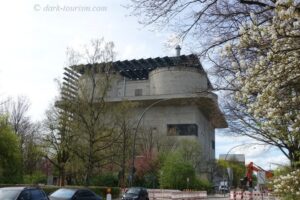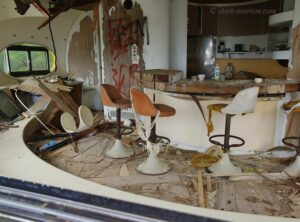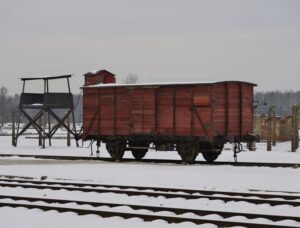At the end of the recent Blog post about Iceland I promised another post about something deliberately not included in that general post, namely because it was so special, hence deserving a full post of its own. I can now fulfil that promise. Here we go:
As the title says, it is indeed about going inside a volcano. Obviously that won’t be an active volcano (any such volcano you could enter only once, and get instantly vaporized). Instead it’s a very special, probably even unique commodification of a dormant volcano, more precisely a drained magma chamber, going down over 120m below the crater top. It is located on the Reykjanes Peninsula a ca. 20-30 minute drive south of Reykjavik.
As you may recall from the general Iceland post, the Reykjanes Peninsula is also where the latest volcanic eruptions have taken place, including the Litli-Hrutur volcano that was still erupting when I travelled to Iceland. This volcano, with the complicated looking name Þrihnukagigur, belongs to the same larger volcanic system but has not erupted in historic time (i.e. since the settlement of the island). It is estimated that the volcano probably last erupted some 4000-5000 years ago. Btw. the Icelandic letter <Þ> in the name is pronounced just like the <th> in “thorn”.
The drained magma chamber was discovered in 1974 by Icelandic cave explorer Arni Stefansson, but it took until 1991 for the chamber to be properly explored and surveyed. It’s not quite clear why and how the magma chamber emptied somehow below ground instead of in an above-ground eruption. That would eventually have closed the crater and sealed the chamber, as is normally the case. In fact they claim that Þrihnukagigur is “a one of a kind on this earth” (quote from the book I bought at the site).
While covering the 2010 eruption of the Eyjafjallajökull volcano (remember, the one whose ash plumes closed down much of Europe’s airspace back then), a National Geographic team got wind of this unique chamber and decided to try and film inside it too. To that end a crane and lift structure was installed to get the camera crew’s equipment down there. (Until then explorers had abseiled the entire 120m!)
Now such a structure is used for giving tourists access to this unique place too (as far as I’m aware, tours have been running since 2015). I discovered this opportunity quite by chance while mousing over Google Maps when exploring the area virtually before my trip to Iceland. Suddenly I came across a pin for “Inside the Volcano meeting point”; I got intrigued and looked it up and was quickly captivated by the idea. It was then a last-minute decision to book places on a tour online. Luckily there were a couple of places available on an afternoon tour the day before our departure home. As you can imagine, especially in the context of Iceland, such an activity does not come cheap. But my wife and I decided it was worth the investment. And we do not regret it.
In addition to the cost it also requires a ca. 50 minute hike through old lava flows to get from the meeting point by the roadside to the crater. (The meeting and registration takes place in a hut that in season serves as a skiing hut for what in winter is one of the main ski slope areas for Reykjavik.) The hike is a bit strenuous at times, but not really difficult. And a guide will lead the way. This is what the terrain looks like … in the rainy weather we had:
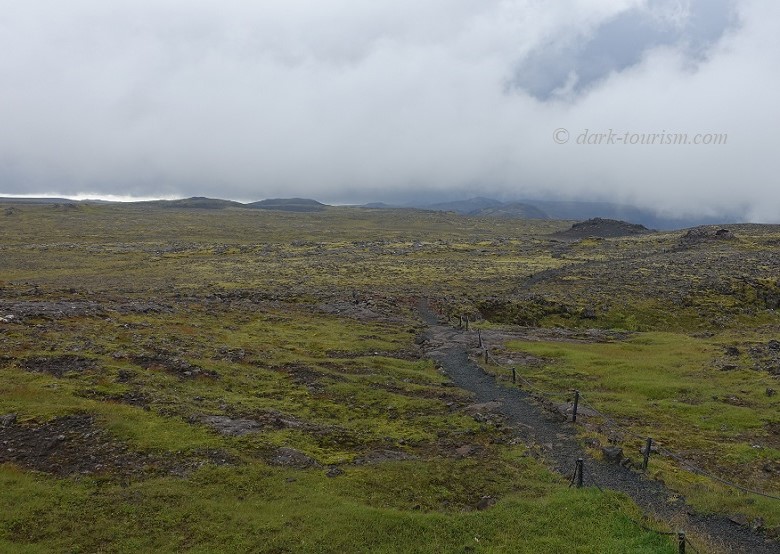
Eventually you reach the company’s “base camp”. Here you get outfitted for the descent into the volcano. You have to wear a harness and a hard hat with a headlamp. The harness is for securing you to the bridge leading to the lift cage and also inside that cage (see below). My wife took this picture of me just before we were ready for going down the volcano:

By the way, it’s quite a rare thing for me to include a photo with myself in it. I normally avoid that, because I want to feature the sites/places in question, not myself at them (even though that has become so common in our current “selfie-culture”). But I found this photo actually quite agreeable – and it gives you an impression of how you have to dress for this activity, even in the height of summer!
Then you have to climb up the Þrihnukagigur crater cone to get to the top and the crater opening with the structure that will lower 6-8 people at a time down to the bottom of the chamber. The “lift cage” used for the descent was fashioned from one previously used for cleaning outside windows of a skyscraper (I think they said this one originally came from Frankfurt):
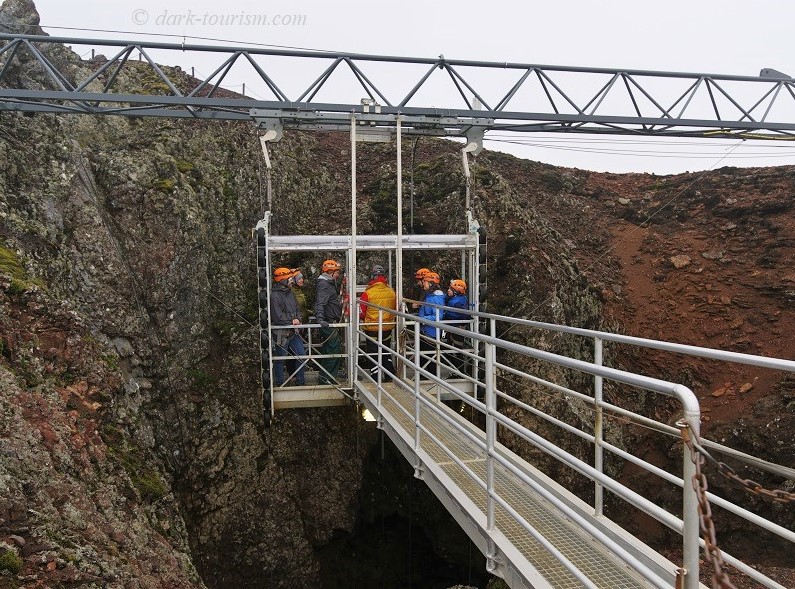
They assured us that they have a triple backup system and that the lift mechanism has never ever failed. Still, the descent is a bit wobbly and perhaps not for everyone, especially those who are afraid of looking down into a seemingly bottomless hole – although it is not completely pitch-black dark down there, thanks to lighting that has been installed at the bottom. Initially the passage down is rather narrow, but then widens out. Here’s a photo from the early narrow part:
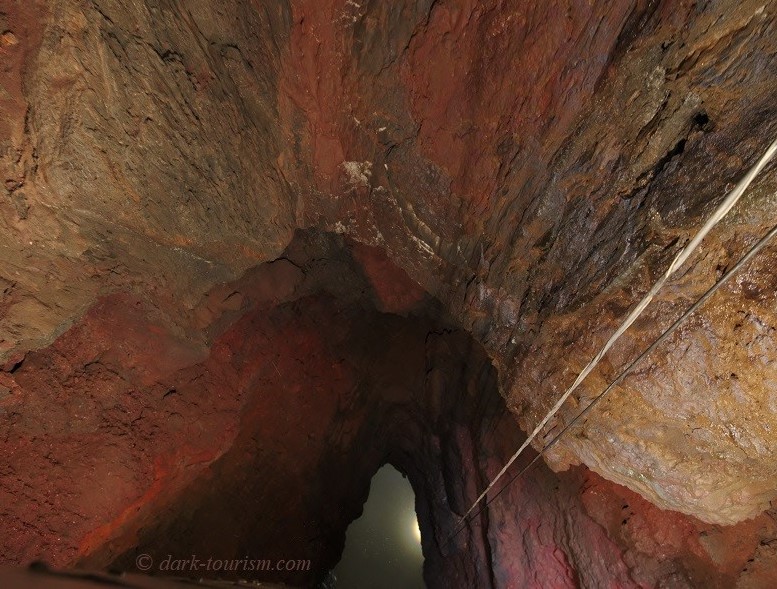
Along the way you go past parts of the crater channel’s walls that display clear evidence of molten and solidified magma/lava:
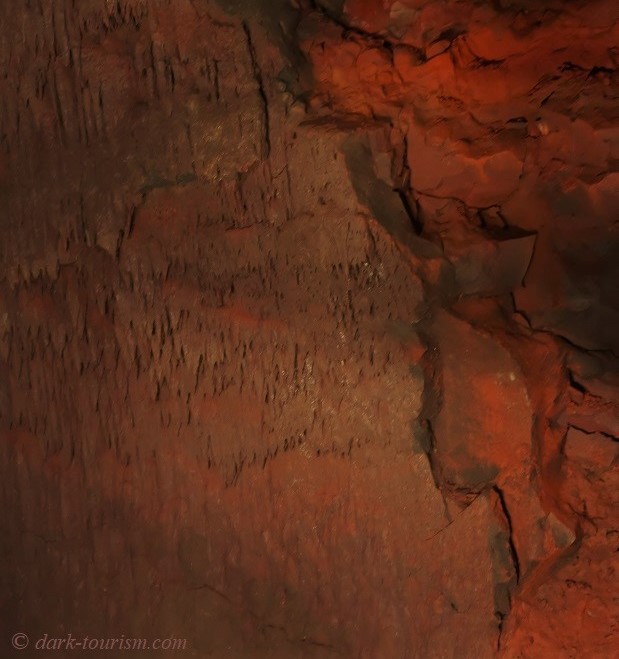
Once the entire chamber would have been covered with such an ex-lava coating, which is up to 50cm thick. But much of this has since fallen off the rocks.
After the narrow passageway the descent continues into the main huge chamber – it would easily be big enough to accommodate the New York Statue of Liberty in its entirety (pedestal included). Dangling down inside such an enormous cavern is quite a nerve-tingling experience.
The descent takes 8-10 minutes to complete. It ends at a kind of rack structure to stabilize the lift cage, as seen here:

You are urged to move away from the exit platform as quickly as possible. That’s because here you’d be standing directly underneath the hole high above you. If anybody dropped anything from up there it could be quite a projectile by the time it gets down here – that’s one of the reasons for the hard hats (the other being the possibility of rock fragments coming down). There’s a kind of concourse around the bottom of the chamber to clamber along on – with some handrail ropes providing some support. But before I attempted this I wanted to concentrate on photography. So I quickly set up the tripod I had taken with me (I asked beforehand and it was allowed) and got my camera ready to take some long-exposure shots. There are lights down there, but not sufficiently strong for getting any sharp enough results just handheld. And the effort I took with the tripod paid off, I think, as the next few photos may indicate (of course they would come out especially well only at full resolution, but that’s beyond this Blog).
This first one shows what must once have been a lava chute inside the magma chamber. Again you can see evidence of a solidified molten lava coating at the bottom:
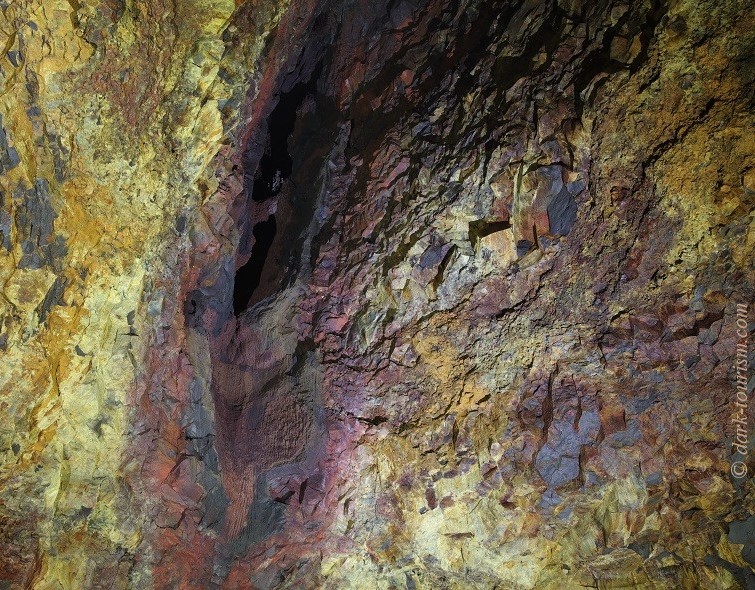
Another structure that I found fascinating was this part, which looks totally charred, giving an indication of what hellish conditions there must have been down here before the chamber drained and cooled (same photo as the featured one at the top of this post):

In other places the colouration of the rock from the heat and chemicals involved produces some almost psychedelic effects, as in this next photo:
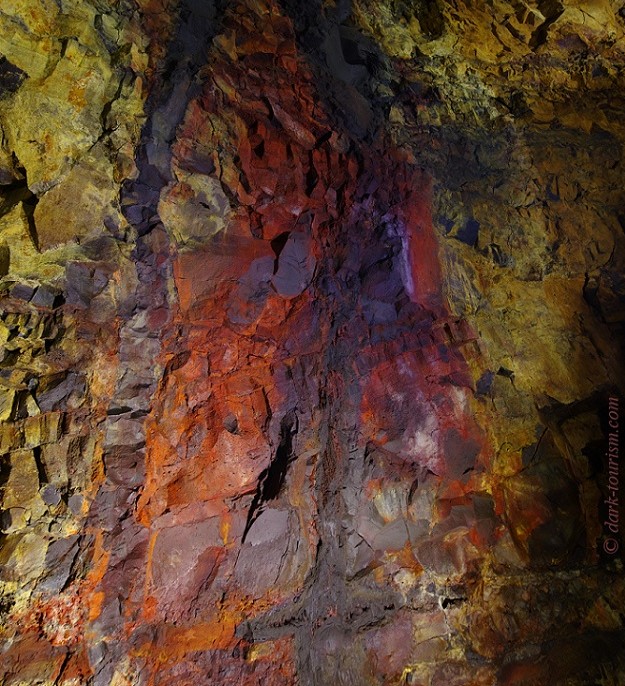
I then also got my big wide-angle lens out to take a few shots like this next one, which provides a somewhat better impression of how wide the chamber is down there. The white light is from the lift cage coming down with another batch of tourists before taking ours back up:
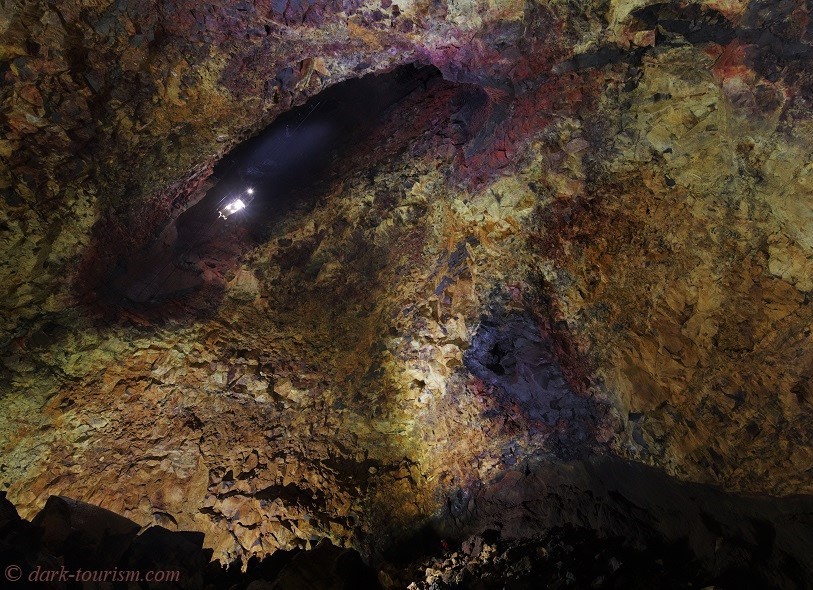
In total we were allowed about half an hour for exploring the bottom of the chamber. Then we got back into the lift cage and started our ascent back to the top, while leaving the next batch of visitors at the bottom:
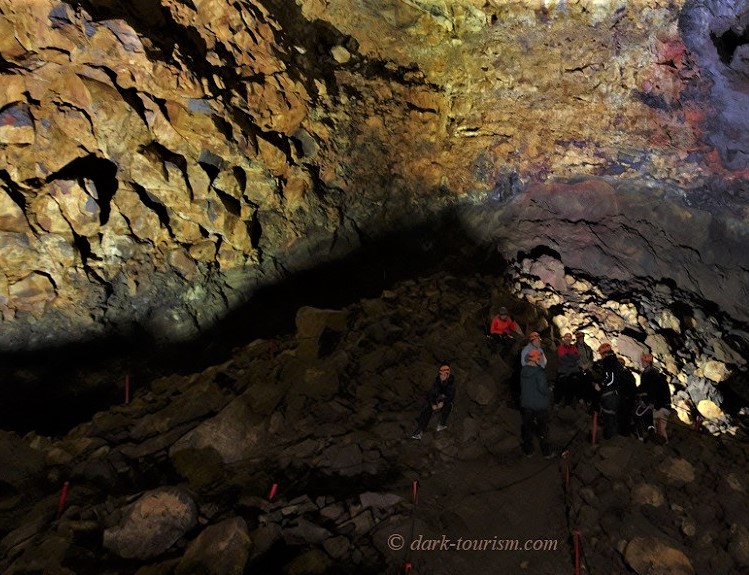
And then we slowly made our way back to the top …
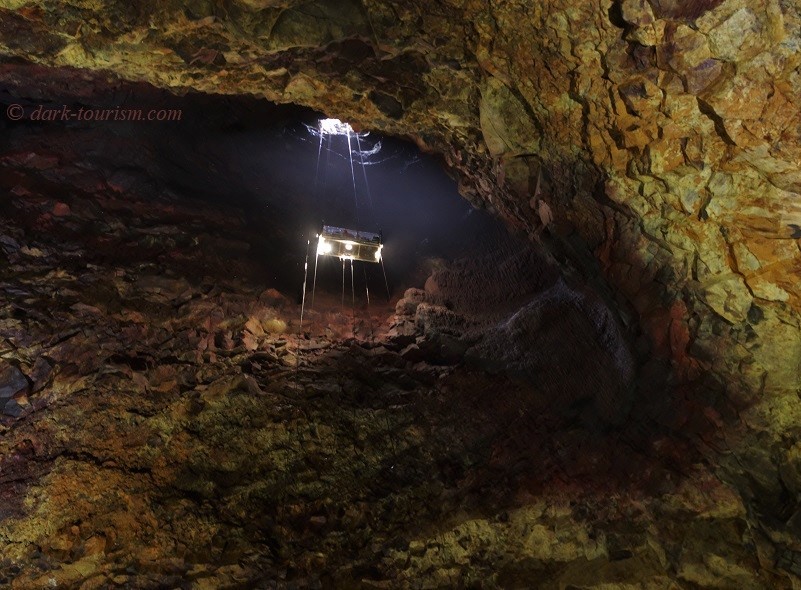
After the end of the tour you can go back to the base camp where you can buy souvenirs and where free coffee, water and a helping of soup (meat or veggie) is offered. My wife and I, however, were too captivated by a couple of cute Arctic foxes play-fighting behind the base camp building. So we just stood and watched them until our guide called us for the hike back to the meeting point by the road. But what’s a coffee or a bowl of soup when you can watch these incredibly endearing animals from quite close up (they are somewhat habituated – I guess the tour company gives them food).
But going further into that would leave the topic of dark tourism altogether so I won’t elaborate and/or provide photos here (I might, however, smuggle one or two into my main website’s entry for this “Inside the Volcano” activity when I get round to preparing it, probably soon, namely in the non-dark combinations part that usually features at the bottom of each entry).
Some may even argue that this “Inside the Volcano” activity isn’t actually dark tourism proper either, insofar as it’s not associated with actual death, tragedy or disaster or anything macabre. True, though you could say that, just as is the case with Cold-War sites, it’s more about the mere potentiality of that sort of thing. That’s why it feels so adventurous to go down there. And you could say it’s literally dark, going down so deep underground into the depths of a former magma chamber, which before it drained must also have resembled the centre of hell. In any case I didn’t want to miss out on such a unique opportunity and found it worthy of being covered in the context of dark tourism in Iceland too (see also the previous post about that intriguing country). I hope you agree.
But with this I come to a close for this time.

